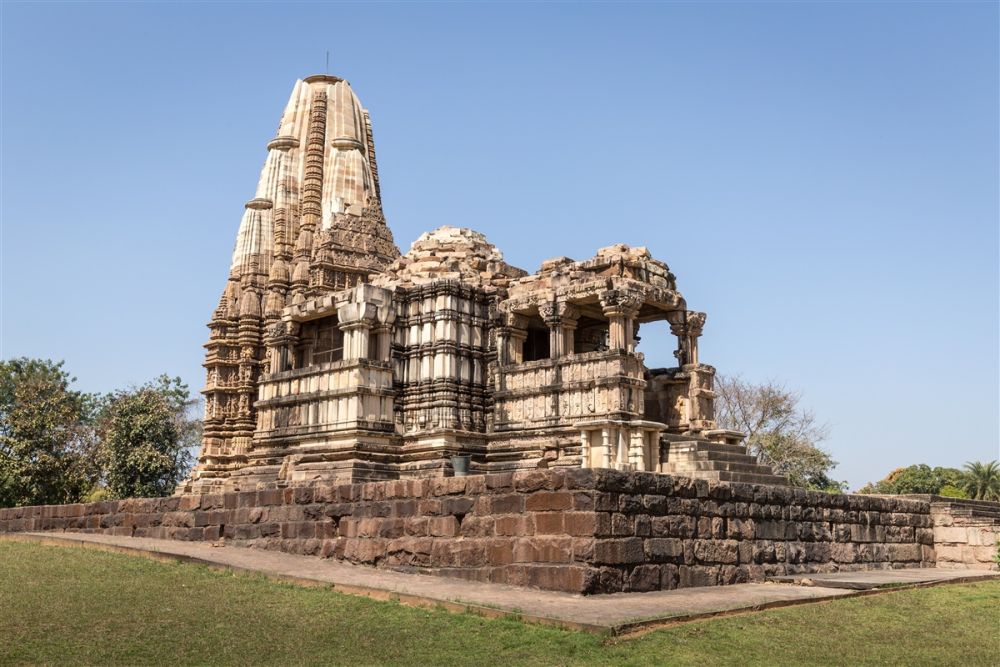

The Duladeo Temple in Khajuraho, Madhya Pradesh, India, is a significant historical monument that has played a crucial role in the country's tourism industry. Situated in the heart of the Khajuraho village, the temple is part of the Khajuraho Group of Monuments, a UNESCO World Heritage Site. It exemplifies the peak of Indian architectural genius during the medieval period.
The construction of Khajuraho temples began in the 10th century, under the rule of the Chandela dynasty. It is believed that the Duladeo Temple was one of the last temples built, dating back to the 12th century. The temple is dedicated to Lord Shiva and is also known as "Kunwar Math". Unlike other temples in Khajuraho which are richly embellished with erotic sculptures, the Duladeo Temple is more modest in terms of its carvings. It stands out for its intricate and delicate carvings, exhibiting a distinct style that emphasizes aesthetics and sophistication.
The history of tourism at the Duladeo Temple and the Khajuraho complex is relatively modern, with the sites coming to popular attention in the 20th century. The temples were rediscovered by British engineer T.S. Burt in the 1830s, but it wasn't until India's independence and the subsequent development of heritage conservation efforts that Khajuraho became a prominent tourist destination.
By the 1980s, with efforts from the Government of India and the international community, the temples were restored and tourism infrastructure was developed to cater to international and domestic visitors. The annual Khajuraho Dance Festival, which started in 1975, also played a significant role in highlighting the cultural significance of the temples and attracting tourists from all over the world.
In recent years, there has been a focus on sustainable tourism development in Khajuraho, with initiatives aimed at minimizing the ecological footprint of tourism and involving local communities in the preservation and promotion of their heritage.
The latest trends indicate that tourists are increasingly interested in immersive experiences. This has led to the growth of cultural tours, yoga retreats, and art workshops in the region. Moreover, digital technology has become an important part of tourism with the introduction of virtual tours and augmented reality experiences that enable visitors to gain deeper insights into the history and symbolism of the Duladeo Temple's sculptures.
Visitors to the Duladeo Temple can enjoy its serene atmosphere and take guided tours that offer insights into the temple's history and the mythology depicted in the carvings. The best time to visit is from October to February when the weather is most pleasant. A trip to Duladeo Temple is often combined with visits to other temples in the complex, such as the Kandariya Mahadeva Temple and the Lakshmana Temple, to get a comprehensive understanding of the architectural splendor that Khajuraho offers.
The Duladeo Temple stands not just as a religious site but as a testament to the rich cultural history of India. The blend of its spiritual significance and the artistic mastery makes it a cornerstone of tourism in Khajuraho, offering both an educational and transcendental experience for visitors from around the globe.